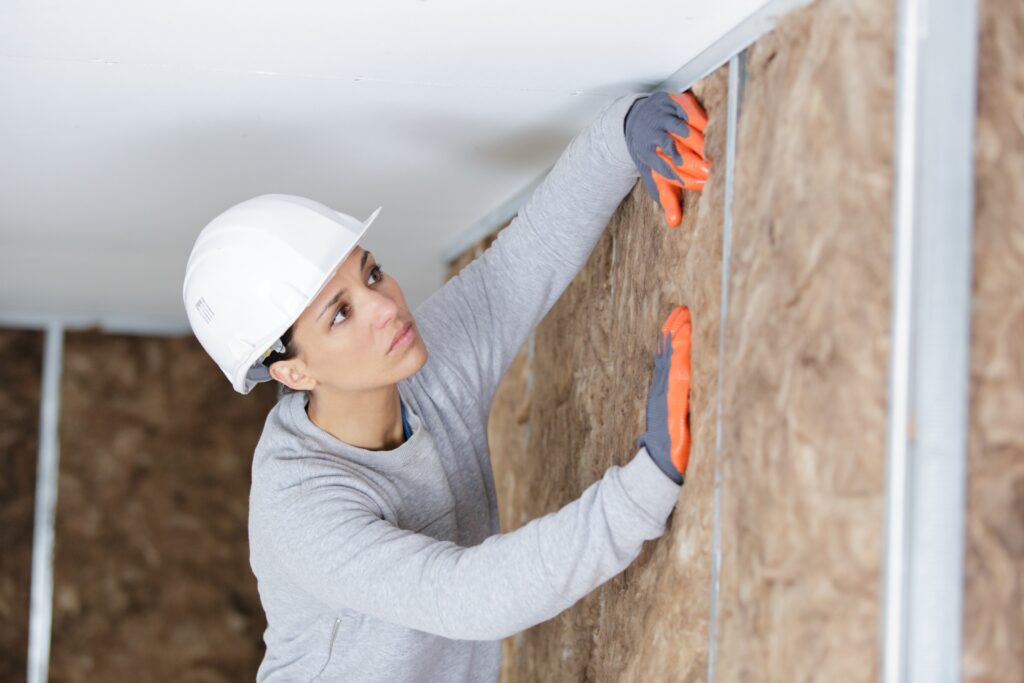
The basics of soundproofing
Before carrying out any acoustic treatment, it is essential to understand the factors or principles on which soundproofing is based in order to achieve the best results.
First of all, we need to distinguish between the different types of noise that can enter our homes. Sound can be transmitted by AIRWAY and STRUCTURAL WAY.
- AIRBORNE NOISE: as the name suggests, this is the sound that is transmitted through the air, either through walls, floors or ceilings, i.e. the sound that passes directly through the partitions. Examples of this type of noise are the sound of neighbours talking or watching television through walls, or traffic noise through windows and walls.
- STRUCTURAL NOISE: sis that transmitted by IMPACT NOISE or FLANKS
– Impact noise is that which results from direct excitation (by impact or friction) of the building. Examples of this type of noise are footsteps, heel clicks, dragging furniture, playing with a ball, closing doors, noise from lifts or garage doors, etc. In fact, they are the most annoying and the most difficult to attenuate.
– And by flanking we mean the longitudinal vibrations that are radiated into the receiving enclosure. An airborne sound can cause vibrations in the structure and these can be transmitted to other rooms. This is what we call airborne or structural excitation.
If we only insulate where we control the airborne transmission, the structural transmission will still allow the noise to reach our home. We would therefore be achieving inefficient insulation.
Once the different types of noise have been identified, it is essential to know the acoustic insulation that we need to carry out in order to avoid these nuisances. This insulation also has the advantage of preventing the noise we generate from reaching the outside world, so we gain privacy, and it also provides us with thermal improvements, which translates into energy savings. It is therefore more than justified to invest in insulation, which will increase the value of our home.
Generally speaking, the installation of this type of insulation means that we lose some useful or usable space in our home, so it is a priority to choose a system that takes up as little space as possible and insulates efficiently.
This is undoubtedly a difficult choice, but we must be aware that it is the system as a whole that will allow us to achieve these results. In other words, it is the sum of all the materials (as a whole) that will give us the efficiency we are looking for.
Understanding the factors that affect sound insulation will help us to choose each of these materials. The mass factor offers resistance to the sound wave and is provided by the plasterboard panels (approx. 800 kg/m³) and the bituminous sheets (approx. 1,600 kg/m³) placed between the panels. The rigidity factor is provided by a galvanised steel structure. The airtightness factor is provided by the acoustic strips placed around the perimeter of the system. The acoustic absorption factor is provided by rock wool, mineral wool, polyester fibres, etc. The elasticity factor is provided by acoustic dampers. The space factor is also fundamental, since the greater the thickness, the greater the insulation. And last but not least, the execution factor (workmanship), since a correct installation, together with the use of quality materials, will be decisive in achieving the best acoustic results.
As far as the sound absorption factor is concerned, we recommend using materials with densities between 15 and 35 kg/m³, i.e. materials that are not very dense, because the material must be porous so that the sound wave penetrates the materials and the friction converts the sound energy into thermal energy.
As for the acoustic dampers (anti-vibration), the choice of these will determine the type of metal structure (profiles) to be used. SENOR is also aware that space is a handicap in construction and has developed the FTD range of dampers, which allow direct acoustic ceilings and wall cladding to be installed in the smallest possible space, with excellent results.
Once the insulation has been carried out, we will be able to feel or appreciate the ACOUSTIC COMFORT, which will allow us to rest, reduce our stress, increase our sense of well-being and prevent mental and physical fatigue.
SENOR Technical Department
tecnico@senor.es



